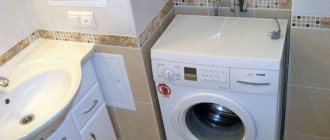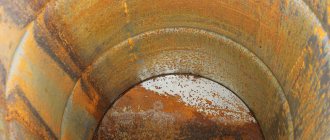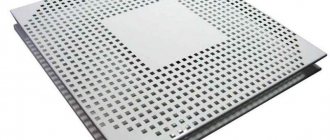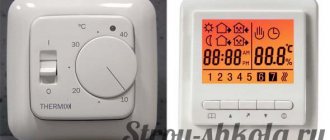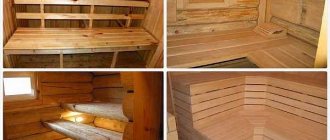The bottom valve appeared on the domestic market of plumbing equipment relatively recently. Although at first it was perceived with distrust, it turned out that the device is quite convenient, has a pleasant appearance and can significantly save water consumption.
What it is?
The bottom valve in faucets is a design that serves to block the hole at the bottom of the sink if you need to draw a certain amount of water into it. Abroad, the issue of water consumption is quite acute, so people are accustomed to using this resource sparingly, and the bottom valve is exactly the device that can help with this. It is a more reliable option than plastic and rubber plugs, which often fail and wear out quickly when used.
A simple device is mounted at the bottom of the washbasin , in its drain hole and, if necessary, closes the pipe connecting to the water supply. At the same time, a regular faucet with two valves is installed that regulates cold and hot water.
Device and purpose
A drain valve is a plug designed to seal the drain hole at the bottom of a sink, vanity, or bathtub. Previously, its role was played by rubber plugs, but today the process of retaining and draining water has been automated and made more convenient. The valves owe their appearance to the residents of Great Britain, who are seriously concerned about the problem of saving water and historically do not use mixers. Their washbasins and bathtubs always had 2 separate taps for hot and cold water, which was mixed directly in the sinks or bathtub.
Over time, the rubber plug was modified and it was called the bottom valve in the mixer, although the device is more related to a siphon than a mixer, without in any way affecting the supply of tap water to the consumer. But due to the fact that the valve often comes complete with the mixer and is connected to it by a system of levers, it is customary to mention it in connection with the mixer.
Structurally, the bottom valve is made in the form of a plug, driven by a lever installed on the back of the mixer. The device is also equipped with a spoke that connects the plug plug with the mixing lever, and a threaded connection designed to connect a drain pipe or siphon. To close the plug, just press the lever with one finger, and the flow of water into the sewer system will stop. This will allow you to rinse washed dishes in the sink, wash small items, or place aquarium fish there while cleaning the aquarium.
Detailed installation instructions
The bottom valve for the washbasin is a plumbing design borrowed from the British. Use it to cool water in the sink or bidet.
Since this device appeared in homes in Ukraine and Russia relatively recently, people are not sufficiently familiar with the types of valves, their installation, and most importantly, functionality.
Is the device practical?
The bottom valve is a beautiful and hygienic alternative to the usual plug
At times it is difficult to accept new things. But if it brings convenience, comfort, plus savings into everyday life, then why not. The improved sink looks prestigious and is easy to use.
Externally, this is a simple design, the main part of which is a plug, which helps to retain water. With the help of a bottom valve, it is possible to save the amount of wasted water.
This is convenient if you need to quickly wash a small item or steam your hands. Previously, rubber or plastic plugs were used for this purpose.
Bottom valves are mounted into the overall structure of mixers, due to which they do not cause installation problems. By observing the order of attaching the mixer, sink and drain, the result is a European-style plumbing fixture.
The bottom valve for sinks is widely used in both apartments and offices. As an option for a successful combination of quality, convenience and practicality, it becomes an indispensable household design. The advantages of the device are undeniable:
- Water consumption is reduced significantly. At current utility prices, this is beneficial.
- Does not cause difficulties in application. For the shutter to work, you need to press the lever.
- Easily clean when clogged.
- The external decor of the sink is not disturbed. On the contrary, the design ennobles the room.
- Blocks the entry of unpleasant odors from the drain into the room.
The bottom valve, like other plumbing fixtures, wears out and malfunctions
Like any plumbing fixture, the foot valve wears out and fails in use. To eliminate the possibility of water leakage, initially install a sink with an overflow.
The disadvantages of this design are much smaller than the advantages, but they are there:
- some models, known as push open, work by directly pressing the plug to draw in water, and this is not hygienic, because you have to dip your hand in the used water;
- The control levers are located under the sink, making them inconvenient to clean.
Any frustration can be dealt with. In addition, the choice of a device with a bottom valve depends on the buyer.
Mechanical
The mechanical type operates based on a spring. Hence the other name – spring valves. To open or close it, just press the drain plug with your finger.
This method is easy to remember and easy to use. Mechanical systems can also be installed without any extra effort.
The only drawback is that you need to wet your hand while opening the valve so that the water goes into the drain hole.
Automatic
part in operation - control lever. The damper opens and closes under the influence of the lever. The system itself works automatically: pressure on the plug is carried out using a metal rod, which is attached to the bottom.
The automatic device includes:
- cork;
- lever arm;
- a spoke connecting the lever and the valve;
- thread with which the drain pipe is connected.
Let us note one disadvantage of this design - the slot for the lever is often located in the back of the mixer, sometimes not immediately visible during installation. That's why some companies make a slot on the side. This does not affect the operation of the structure in any way.
READ MORE: Annual chrysanthemum: description, varieties, planting and care
Nowadays, manufacturers of plumbing fixtures offer in their own assortment bottom valves that vary in design, color, and material. Accordingly, the cost is determined by several parameters:
- The material can be bronze or ceramics;
- the coating is either chrome or colored;
- the cartridge, which is responsible for mixing hot and cold water, must withstand high water shocks;
- device from a trusted manufacturer.
You can install the bottom valve yourself
You can install the bottom valve yourself or call a plumber.
In order not to harm the coating (both chrome and colored), you should use tools with sponges when working. If you do not have such a tool at hand, standard mounting gaskets made from cardboard, brass or copper will do.
Since the valve and mixer are of the same design, they must be installed together.
Let's dwell a little on the installation of the crane. Installing the main sink element takes a little time and effort. Let's define the following actions:
- The hoses coming from the faucet and valve lever are routed through holes in the sink where the faucet will be installed.
- The structure is fixed above the hole in the washbasin pedestal, and a rubber gasket is placed in the gap between the tap and the sink.
- The hoses are attached to the hot and cold water pipes.
With the mixer installed in this way, you can proceed to installing the device.
Let's consider a design option for a sink bottom valve with an overflow. Installation will require strictly following the step-by-step instructions. But after installing the valve system, do not rush to check the practicality of the device. The final stage will come when another siphon is connected.
A layer of sealant must be applied around the outside of the valve.
- A valve is inserted into the drain hole. Experts advise applying sealant or silicone around the outside of the valve for a more durable waterproof seal.
- Hold the outer part of the bottom valve in place and screw the body down so that the threaded connection is directed toward the back.
- Place the valve stems perpendicularly. At the docking point they are attached using a plastic cross.
- Then we connect one spoke to the lever, the second to the valve eye. Check the action of the lever: when the lever is lifted, the valve should open, in the initial position it is closed.
- Take the plug and place it in the hole to ensure that the plug seals the drain hole thoroughly.
- If the plug does not properly close the hole in the sink, remove it and use a wrench to adjust the operation of the adjusting screw. Tighten the locknut using a 10mm wrench. This time the plug should close the hole tightly.
- The siphon is put on from below, the flexible hose is screwed to the sewer pipe.
To be sure of the quality of the installation work, test the assembled structure. First, open the hot and cold water tap. Carefully feel the connections and make sure there are no leaks anywhere.
If you still find places where water is leaking, you need to secure the connections more tightly or use sealing tape. After this, check the operation of the mixer. Try opening and closing the valve several times. The steps for a high-quality installation are easy to perform. The quality of the device is determined by the tightness of the bottom valve.
The bottom valve as a modern type of sink fitting justifies its own growth in popularity.
This is a rational and convenient design to learn how to use water thoughtfully. This simple device is a useful and practical device that saves water resources and the family budget. The combination of design and comfort, the introduction of European style into domestic homes is the result of the decision to install a bottom valve in the house.
Bottom valve for a sink. Purpose of the bottom valve. Mechanical and automatic (types). Installation of a mechanical valve. Installation of an automatic valve with and without overflow. Main characteristics. Installation features. You will learn about all this in our article!
The bottom valve for a sink is an analogue of a rubber stopper. The difference between them is not only in aesthetics and hygiene.
The bottom valve operates by pressing a button. This device is designed to hold water in the sink, which saves water and therefore money.
There are the following types of bottom valves:
- Mechanical
- Automatic
- With overflow
- No overflow
Mechanical valves operate with light pressure.
The basis of the mechanism is a spring!
Main advantages:
- Easy to install
- Long service life
- Loyal price
The disadvantage is that to drain it you will need to put your hand in the water.
Automatic ones close and open using a lever (button) The entire mechanism is located under the sink, which preserves the appearance of the faucet. The lever (button) itself is in most cases located at the back of the tap.
Advantages:
- The aesthetic appearance of the sink is preserved
- Installation is not difficult
- Maintaining hygiene
Automatic valves come in two types, with and without overflow. Valves with overflow have an outlet, like in a bathroom, to prevent the sink from overflowing with water. Valves without overflow are not equipped with this outlet.
If the washbasin or sink does not have an overflow hole, then it is logical to install a valve without this function. The valves are available in three versions. In gold, bronze and chromed metal. Which one to choose is up to you.
You can install any valve yourself. Installation of a mechanical valve is as simple as possible. The valve itself is inserted into the drain hole and fixed. A spoke is connected to the lever and the valve ear; it is responsible for opening and closing the plug.
After installation, the siphon is connected. The functionality of the valve and the presence of leaks are checked. If the device operates and there are no leaks, the valve is ready for use.
If there is an overflow hole, be sure to connect the hose to the siphon.
There are faucets with an automatic valve, equipped with and without an overflow. Let's consider their installation. Before installation, it is worth checking the length of the pipes (they can be rigid and must be shortened)
When reducing the length of the pipes, be sure to rinse the unit under running water in all directions for 3-5 minutes. This will help to avoid operational disruptions. It is better to place the mixer on a sealant, which will increase the quality of fit and service life.
Pros and cons of using a valve
The use of new hydraulic locking devices has several advantages.
- Economic benefit . Due to rising utility tariffs, many had to think about cutting costs. The cost of devices ranges from 500-2000 rubles, depending on the model and manufacturer. It's a small price to pay to reduce bill amounts.
- Easy to use . The valve is operated with one finger. No effort is required to lower or raise it. This is accessible even to children.
- Ergonomic shape . The device is convenient and easy to clean.
- Beautiful design . A neat metal or ceramic lid looks much nicer than a hole in the sink. It also wins in comparison with the usual plastic stopper.
- Reliable fastening . Traditional bathtub and sink plugs are tied to plumbing fixtures using fishing line, which can break at any time. Metal chains improve the situation somewhat, but they are also not entirely reliable, and they also make noise when used.
- Odor protection . Unpleasant odors in the bathroom are not always the fault of the users, and cleaning does not eliminate them.
It can be difficult to deal with the stench, but it is necessary, because sewer gases contain substances hazardous to health - hydrogen sulfide, ammonia. By plugging the drain, you can simply get rid of the problem.
Bottom plugs have no serious disadvantages, but a couple of nuances are worth considering. It will take time to get used to the peculiarities of using the mechanism: you need to monitor the water level when filling the sink.
Design can play a determining role when purchasing plumbing fixtures. Click-clack system models can be selected by style and color
There are also irritating moments in the use of spring mechanisms - putting your hand in dirty, too hot or cold water. And with lever ones, it’s inconvenient to clean the parts located under the sink and behind the mixer.
Types and device
The valves are sold as a set, so you don’t have to select additional components for the sink.
Depending on the control method, the device is divided into three types:
- Automation involves adjustment by a lever valve. The main part of the automatic system is metal pins of small diameter, the main part of the connections, which are located under the sink, and the valve is inserted into the drain hole. A device with an automatic system is suitable for almost all types of washbasins with standard parameters. The automatic valve fits a regular siphon.
- Mechanics. The basis for the functioning of the click-clack system is a spring, which is activated by pressing. All you need to do is place your finger and lightly press the headset cover.
- Push Open faucet system. Its main disadvantage is the manual action on the valve, that is, if you need to drain the water, you will have to wet your hand. But on the other hand, such a device is easy to install and easier to maintain. This device can be used not only for the sink, but also in a bidet or bathtub.
Valves can also be:
- With overflow. Designed to prevent overflow when water pressure increases sharply, as well as in cases where the tap is forgotten to be closed. The drain-overflow system is found in most washbasin designs. When the liquid level rises above the permissible level, water flows not onto the floor, but into the drain.
- No overflow. The design of not all types of sinks allows for the installation of a drain-overflow system, for example, washbasins mounted on a countertop, or washbasins that are made of glass or natural stone. An alternative to this system can be small grooves that are located around the perimeter of the bowl. In case of overflow, the water will pour out there.
- The design of some types of sinks does not provide for a drain-overflow system. These include, for example, overhead sinks, as well as products made of natural stone or glass. In such structures there is a regular drain, but it cannot be blocked.
The design of different types of valves is different. Thus, a mechanical valve (click-clack system) is a single mechanism powered by a spring.
But automatic models are designed differently:
- stub;
- a push button whose task is to open and close the drain;
- connecting needle;
- threaded fittings with which you can connect the drain pipe and the valve.
Also interesting: How to choose the optimal size of sink for your bathroom?
The headset can be made in different versions, they are:
- chrome plated;
- gold;
- bronze.
Accordingly, choosing a product for any design will not be difficult. Manufacturers also provide a guarantee for their products, and if repairs are required, there will be no problems with it.
Operational problems
Like any plumbing fixture, a mixer with the ability to switch to a shower head has its own service life. A common problem that homeowners face during operation is dripping faucets. Knowing what the mixer consists of, you can fix the leak yourself and extend the life of the equipment. The most common causes of leakage are:
- Ball mechanism or cartridge clogged. Due to the poor quality of tap water, the insides of the faucet often become clogged. This causes the mechanism responsible for mixing water to fail. You can fix this problem by cleaning or replacing the cartridge.
- Abrasion of gaskets. Due to constant friction when turning the tap or control knobs, the sealing gaskets gradually wear out and cease to perform their intended functions. Replacing the gaskets solves this problem.
- Changing the position of the spool mechanism. If the screws securing the spool become loose, it can change its position in space. Because of this, the shower switch may leak. To fix this damage, you need to tighten the screws and adjust the spool.
By what criteria are plugs selected?
First of all, you should decide on the price. You need to understand well what the buyer gets for his money - quality of materials and workmanship, design or additional convenience.
An important selection criterion is the quality of the metal and threaded connection. To understand how reliable the chosen model is, you need to make sure of the strength of the material. It is advisable to check how the plug is assembled and disassembled
Let's consider several design features on which the price depends:
- presence of overflow;
- type of control;
- design;
- brand.
The model should be selected based on the type of sink. If it does not provide for the possibility of removing excess water, install a bottom valve without overflow. An option is to replace the siphon with a more practical one.
As for the management mechanism, you need to clearly define your goals. If the sink holds water for hand washing, it is unlikely to be too dirty after use. There will be no problems with lowering your hand to the spring valve.
But if you plan to wash dirty shoes or greasy objects, it is better to give in to natural disgust and buy a lever device.
The design affects the cost of the product. Taking into account the range of prices, the overpayment for a beautiful design of the bottom valve is not that great. Therefore, you should not deny yourself the pleasure of putting a beautiful plug on the sink
The role of the brand is difficult to overestimate when choosing fittings. Brand reputation is not only advertising, but also an indicator of the real quality of goods. Before purchasing, it is advisable to read user reviews and take into account their complaints about different manufacturers.
The bottom shut-off valve is a small part, but it can cause unpleasant moments if it quickly fails. It’s better to pay a couple of hundred rubles more and buy a reliable, beautiful plug that will last for several years without breaking.
How to choose?
Different design options are suitable for specific needs. It all depends on where the foot valve is needed. If it is required for a shower tray or bathtub, then it is preferable to choose a mechanical model. It is possible to purchase the device complete with a siphon or separately.
For sinks used for washing, a set with a factory-made automatic valve is suitable; such equipment is also available for bidets. When purchasing a faucet and valve separately, you can opt for models with a chrome finish; this combination will be optimal.
The main criteria to be guided by:
- quality of the locking system, lever or mechanical;
- device for overflow (its presence or absence);
- aesthetics of appearance;
- product manufacturing company.
By the way, almost all these nuances affect the cost of the design. Of course, the most important thing is high quality and durability, which is why such equipment is chosen only from trusted manufacturers. As a rule, this means a high degree of tightness, immunity of parts to the aggressive effects of hot water and the salts it contains. Any product of this type must have a quality certificate and other important documentation that you need to familiarize yourself with. In case of any breakdown within the specified period, the device can be replaced thanks to the warranty card.
The bottom valve is a functional accessory that helps make water consumption more economical and is easy to use, and thanks to the instructions, you can do the installation yourself.
How to install the bottom valve, see the video below.
DIY installation of a valve on a sink
After purchasing such a product, you should immediately install it in the drain to evaluate the convenience and savings. This can be done in a small amount of time alone.
NOTE. Before you start installing the bottom valve on the sink with your own hands, you need to pay attention to the fact that the tools mainly used in the work have sharp surfaces
which can easily damage the ceramic base of the sink. Therefore, the best option is to use equipment with special jaws or without sharp teeth. You can also use conventional devices, but then you need to place gaskets on the surface of the sink itself (cardboard or metal).
The sequence of actions should be something like this:
- The lever with which the drain will be adjusted, as well as the hoses that come from the mixer, are placed in the lower hole. In this case, you can glue the faucet to the sink using sealant so that it fits securely into the hole.
IMPORTANT. It happens that bottom valves intended for installation on a sink are supplied not with soft, but with hard tubes
In this case, they will need to be bent manually to give the desired shape. It is not advisable to trim the tubes because metal filings (shavings) often get into the faucet mechanism itself, making it difficult to move it around. Therefore, if you decide to trim the pipes, you must rinse all internal surfaces with a strong stream of water for 3-5 minutes in all directions.
- Next, the body itself is mounted on the sink using a nut. There must be rubber gaskets between the body and the sink on both sides (usually they are included in the kit).
- After this, the hoses are connected to the hot and cold water pipes, respectively. Again, all seats are accompanied by spacers on both sides.
IMPORTANT. It should be taken into account that the pipes can be longer and be bent in an arc (U-shaped bend). However, zigzag (S-shaped) bends are not allowed. The fact is that in this case, the water pressure on the internal surfaces of the pipes will be uneven, as a result of which they will wear out much faster (they can leak within a year if they are used frequently in this condition).
A water seal (bottle or tubular siphon) is placed in the drain, and the valve spokes are folded into the shape of an equilateral cross. To create a rigid structure, they are secured with a self-tapping screw in a cross-shaped form made of plastic.
The ends of the spokes are connected according to the scheme: with a lever on one side and with a valve loop on the other. Thus. vertical translational movements will provide a future mechanism for draining water when the lever is pressed.
Next, a siphon and a pipe leading to the sewer are connected to the drain as usual.
VALUABLE ADVICE. Before starting work, be sure to check the system to see how well it is assembled. A sink valve usually requires precise installation into the drain, as it subsequently creates a complete plug for water. If, after passing large volumes of water, even a small leak is detected, the system needs to be rebuilt. First, just tighten all the threaded connections tighter. If this measure did not eliminate the leakage, then... There were some significant errors in the installation, and the work needs to be done again.
The bottom valve for the sink can be installed as an additional accessory on a ready-made system. It often happens that it is mounted immediately with the mixer.
Video instructions for installing the bottom valve
The general assembly diagram along with an approximate drawing is shown in the figure below.
Sinks with overflow
In the case where the bottom valve is already installed in the drain hole, but it does not have an overflow system, you can go the other way and purchase a siphon with an overflow, which is also easy to assemble yourself. Technically, an overflow is a tube made of any material (lately plastic is more often used), with the help of which excess water leaves the sink when the bottom valve is closed. The assembled device is shown in the figure.
A sink with an overflow is distinguished by the fact that 2 pipes go simultaneously to its siphon - 1 directly from the drain hole (a valve is built into it), and the other from the upper drain pipe, which ensures that water does not overflow.
Installation of the foot valve
Installation of mixer and bottom valve
You can install any valve yourself. Installation of a mechanical valve is as simple as possible. The valve itself is inserted into the drain hole and fixed. A spoke is connected to the lever and the valve ear; it is responsible for opening and closing the plug.
After installation, the siphon is connected. The functionality of the valve and the presence of leaks are checked. If the device operates and there are no leaks, the valve is ready for use.
If there is an overflow hole, be sure to connect the hose to the siphon.
Automatic bottom valve (installation)
There are faucets with an automatic valve, equipped with and without an overflow. Let's consider their installation. Before installation, it is worth checking the length of the pipes (they can be rigid and must be shortened)
When reducing the length of the pipes, be sure to rinse the unit under running water in all directions for 3-5 minutes. This will help to avoid operational disruptions. It is better to place the mixer on a sealant, which will increase the quality of fit and service life.
The valve is installed in the sink hole. The lever mechanism itself is immersed along with the mixer. After fixing, we connect all the tubes and hoses under the sink.
A water seal (bottle or tubular siphon) is placed in the drain, and the valve spokes are folded into the shape of an equilateral cross. They are fastened with a self-tapping screw in a cross-shaped form made of plastic. The ends of the spokes are connected according to the scheme: with a lever on one side and with a valve loop on the other.
Vertical forward movements will provide a future mechanism for draining water when the lever is pressed. If there is an overflow system, don’t forget to connect it. We connect the lever of the mechanism to the valve and attach the siphon. We check for leaks.
Tubes and hoses can be bent but remain in a U-shape. The zigzag shape of pipes is contraindicated. If there is a leak, it is recommended to disassemble the structure and first tighten it.
In case of no result. We advise you to go through the system and install it again. In rare cases, a manufacturing defect may occur. Faucets equipped with a valve without overflow are installed in the same way.
Installing an automatic valve to an existing faucet
There are bottom valves for faucets (such faucets have a hole for the lever). If there is none. The installation task is more difficult, but doable. To do this you will need a hole for a lever or button. If the sink is metal, you can make a hole yourself. And install the valve according to the instructions.
In the case of a ceramic washbasin, there is an option. But it is worth purchasing a bottom valve with a side button. It can be mounted in the overflow hole.
A mechanical valve is suitable for a washbasin.
The automatic valve is ideal for the kitchen. Immersing your hands in dirty, greasy water is unpleasant. Pay attention to the tools; it’s good if they don’t have sharp corners. Line the sink with cardboard or other material before installation to avoid damage.
Gaskets occupy a special place during installation; do not forget about them. Tighten all nuts and bolts tightly.
Source
Leak check and maintenance
The serviceability of the equipment is checked step by step. After turning on the water supply, you need to make sure that there are no leaks at the joints, as well as in the design of the mixer itself. If water leaks out, additionally use a special fluoroplastic tape “Fum” for the threads, and the nuts should also be tightened.
To check the tightness of the siphon, unscrew the entire tap. At the same time, you should make sure that the valve is working properly. To do this, open and close the plug 2-3 times, fill and flush water into the sink. Carrying out such a check is a necessary condition for the further, uninterrupted operation of the system. It wouldn’t hurt to check the strength and reliability of hoses and pipes even before installing the mixer and valve.
Sources:
- https://stroy-podskazka.ru/vannaya/smesiteli/donnyj-klapan/
- https://dekoriko.ru/vannaya/smesiteli/donnyj-klapan/
- https://sovet-ingenera.com/santeh/rakovina/donnyj-klapan.html
- https://oboiman.ru/inside/donnyj-klapan-v-smesitele-cto-eto-takoe-i-dla-cego-nuzen-vybiraem-kran-dla-umyvalnika.html
- https://OmShantiDom.ru/montazh-i-remont/donnyj-klapan-v-smesitele-chto-eto.html
- https://www.tproekt.com/donnyj-klapan-preimusestva-montaz/
- https://101studio.ru/truby-dlya-otopleniya/ustrojstvo-donnogo-klapana-dlya-rakoviny.html
- 1

